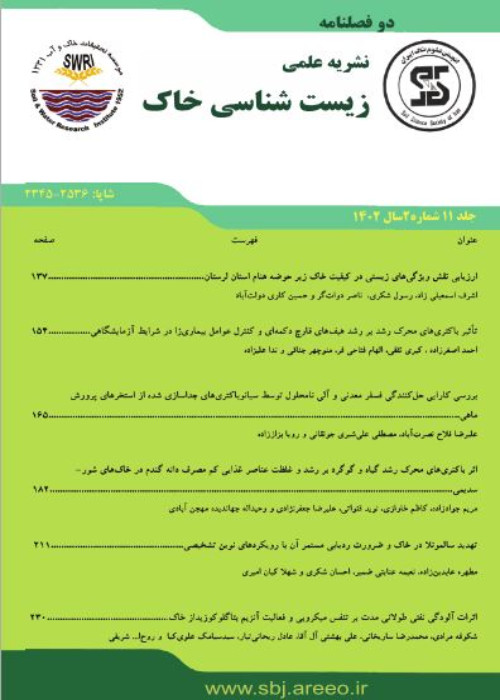Study of Biosurfactant Production by Bacterial Consortium Isolated from Oil Contaminated Soil
Acenaphthene, a natural component of crude oil, is a carcinogenic compound and persistent to degradation. Bioremediation, which involves the use of living microorganisms for degradation and mineralization of contaminants, used to remove persistent contaminants such as Acenaphthene. Complete degradation of hydrocarbons is the result of different species activity that is known as a bacterial consortium. On the other hand, the low solubility of oil pollutants is a limiting factor in bioremediation. So, recently biosurfactant-producing bacterial consortia have been considered in the bioremediation to increase the bioavailability of oil contaminants. In the present study, Asenaphthene degrading bacteria were isolated by enriching the oil-contaminated soil and then, the biosurfactant-producing bacteria were screened based on the surface tension of the medium containing the isolates. After bacterial identification, degradation of Acenaphthene by isolates, consortium, and extracted biosurfactants from isolates, were investigated in the aqueous medium and soil. The results showed that both AP3 and BM1 could decompose Acenaphthene and produce biosurfactants. The AP3, BM1, and their consortium degraded 72.2%, 54%, and 100% of pollutants in the aqueous medium, respectively. The effect of biosurfactant extracted from AP3 on the degradation of Acenaphthene was more than the BM1 biosurfactant. Percentage of Acenaphthene degradation in soil by AP3 and consortium was 64.7% and 75.7% respectively, and the use of AP3 biosurfactant with the consortium led to complete degradation. 16S rRNA gene sequences of isolates showed that AP3 100% was compatible with Bacillus velezensis CR-502 (T) and BM1 99.5% was compatible with Pseudomonas putida ATCC 12633. Therefore, the use of a consortium and biosurfactants improve the biodegradation of Acenaphthene compared to inoculation of individual isolates.
- حق عضویت دریافتی صرف حمایت از نشریات عضو و نگهداری، تکمیل و توسعه مگیران میشود.
- پرداخت حق اشتراک و دانلود مقالات اجازه بازنشر آن در سایر رسانههای چاپی و دیجیتال را به کاربر نمیدهد.


